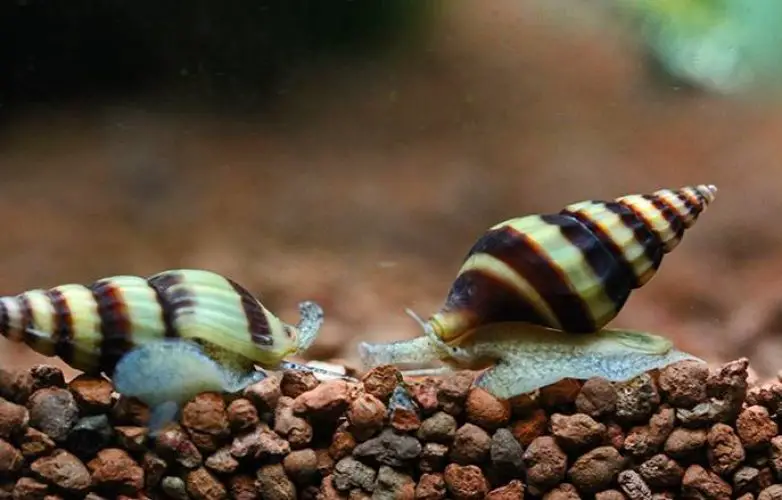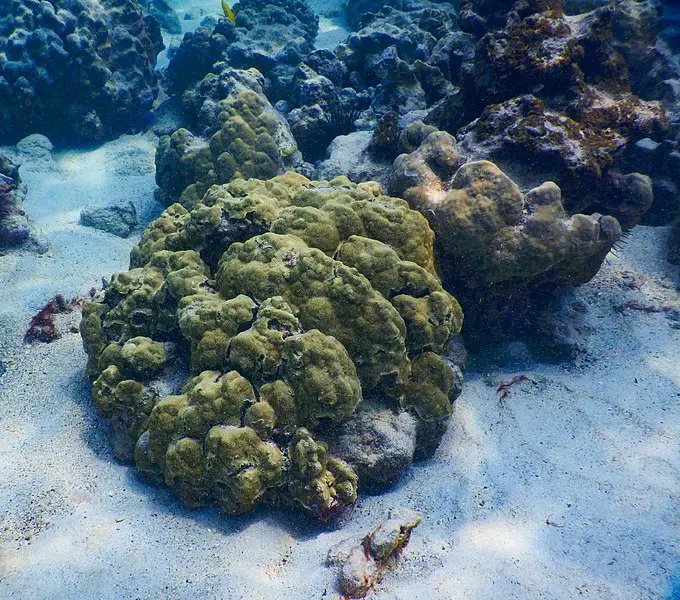Snails are essential for keeping your reef tank clean by eating the algae that build up. In order to ensure that your tank is algae free, you need enough snails to do the job. A good rule to follow is keeping one snail for every five gallons of water your reef tank can hold. So for a twenty or thirty gallon tanks, you would need four to six snails.
Not only does the number of snails you need for your reef tank depends on the size of the tank, but also the size of the snail. One snail per five gallons of tank is sufficient for one to two inch snails. On the other hand, larger snails that measure four inches should be kept at numbers of one or two per twenty or thirty gallons of tank.
If you are worried about having too many snails in your reef tank, there is really no such thing. The snails will thrive as long as there is an adequate amount of food, usually in the form of algae and/or waste products. If there isn’t enough food, they will either die off or eat each other. They maintain a fairly efficient ability to control their own population.
What Are the Best Snails for a Reef Tank?
Algal growth problems are typically the main reason to acquire snails for your reef tank. However, there are a lot of different varieties of algae that can cause problems, so your best bet is to get a type of snail that will feed on more than one type of algae. Cerith snails are one of the most popular kinds of snail and eat everything from detritus to macro algae.
However, cerith snails will not eat algal films, whether brown or green. If film algae are your issue you are better off with Mexican turbos, trochus, astreas, or margaritas. All of these varieties will consume green and brown film algae. The Mexican turbos and trochus will also eat other kinds of algae, but do not consume detritus.
To determine the best snail for your reef tank, you must first identify what needs to be cleaned up in your tank. Whether your issue is detritus, macro algae, algal films, or phytoplankton like cyanobacteria or diatoms, different snails will be more effective at consuming different algae types.
How Much Calcium Do I Add to My Aquarium for Snails?
Reef tank calcium levels should be kept between 380 and 450 parts per million to maintain healthy corals. That being said, snails also need sufficient calcium to keep their shells hard and healthy for protection from predators and disease. While there are no clear adequate levels of calcium for reef snails to be found, your reef tank’s water should be kept within the parameters that are healthy for coral.
If you notice that your reef snails have shells that are growing weak, try feeding them calcium rich foods such as kale, peas, broccoli, seaweed, and collards. Additionally, there are aquarium snail food flakes with extra calcium designed to help boost calcium concentrations in snails to keep them healthy.
If the calcium concentration of the reef tank’s water is too low for both coral and snails, liquid calcium or calcium tablets made to dissolve in saltwater are available to add to your reef tank. A simple calcium water test will allow you to determine if the water needs more calcium. If the water levels look good, but your snails still look poorly, try feeding them calcium directly.
Which Snails Are Reef Safe?
There are plenty of snail species that are safe for reef tanks, both in their resilience to water conditions and not being harmful to corals. Turban snails, trochus snails, and cerith snails are three of the best reef safe snails with voracious appetites for algae. They will not harm the coral, but do an excellent job of keeping it clean of problematic algal overgrowth.
Nassarius and bumblebee snails are also efficient cleaners and safe for reef tanks. Although, these species will seek alternative forms of sustenance if the algae have all been consumed. They are omnivores and detritivores that may eat some of the more advantageous symbiotic animals such as polychaete worms that may live within the coral, even if they won’t eat the coral itself.
Donkey’s ear abalone and golden money cowrie snails are unique reef safe finds. They are very large snails and tend to be a bit clumsy, knocking over any unsecured decorations. Overall, though, they are helpful in cleaning up algae and will not harm coral. Fighting conch shells are also entertaining reef safe snails that have amusing wrestling matches with each other but will leave the coral unharmed.
Do Snails Reproduce in Reef Tanks?
Reproduction in saltwater snails held in captivity depends on the species. Some snails will readily breed in reef tanks, while others refuse to. Nassarius, conch, astrea, margarita, nerite, and turbo snails will rarely reproduce in aquarium tanks. Turban, trochus, cerith, and columbellid snails have more success with reproduction, although non-stress-inducing conditions must be present. They should have an adequate food supply and excellent water quality to breed.
Even if snails lay eggs within the tank, chances that the larvae will grow to adulthood are slim. Most snails that reproduce in tanks lay eggs that stick to the glass. If there are carnivorous snails or shrimp present in the tank, most if not all of those eggs will probably be consumed before they are fertilized. For the larvae that do survive, they must still contend with predators.
The water filtration system can also spell death for many larvae, as most snails are free floating at this stage. If they manage to escape predator detection and being sucked into the filter, the snails may grow to adulthood. Although, the best way to ensure this if you want to keep them is to move the larval snails to another tank until they are adult snails.


